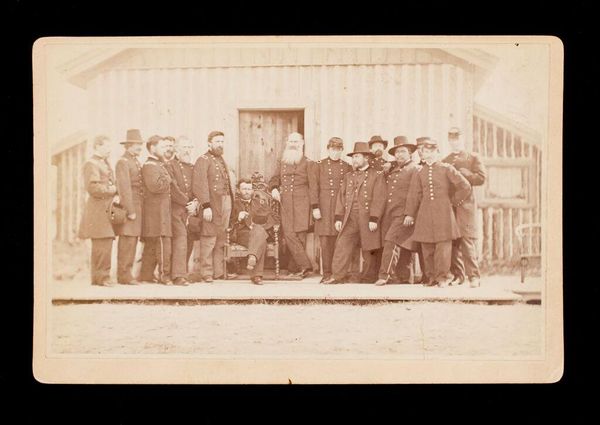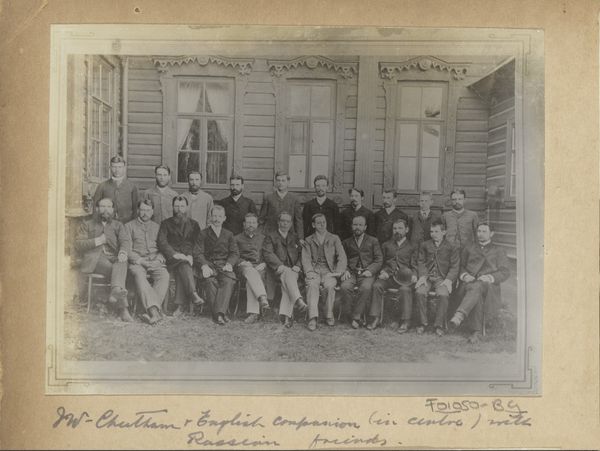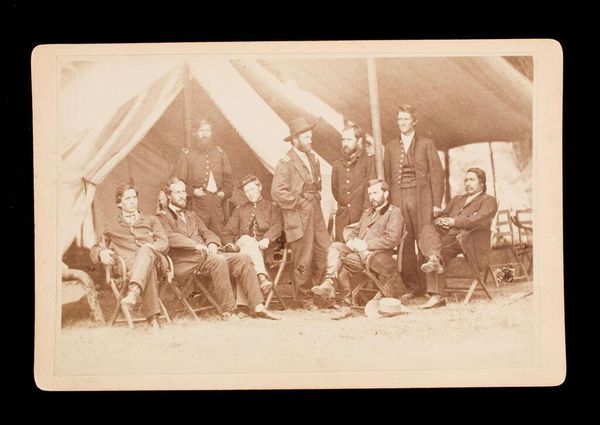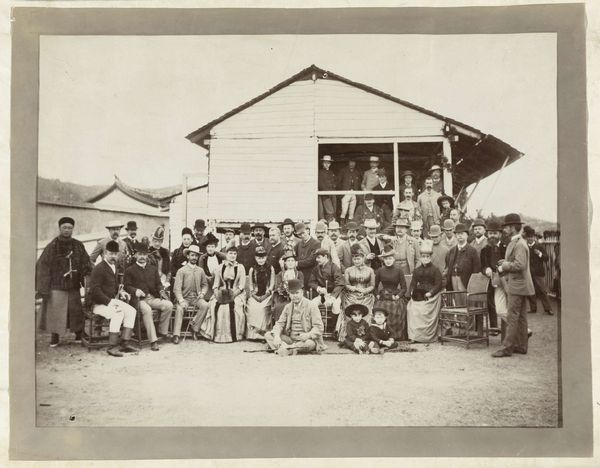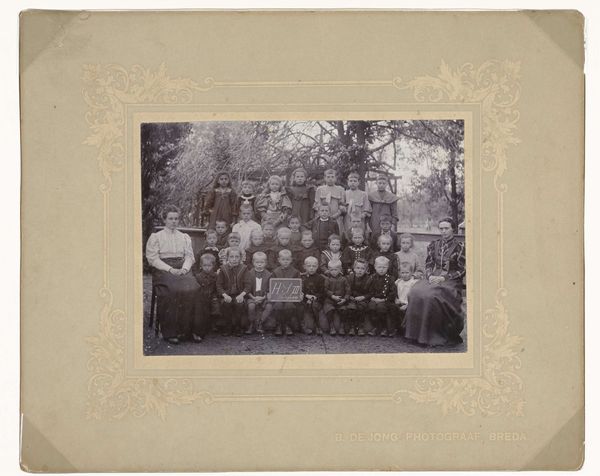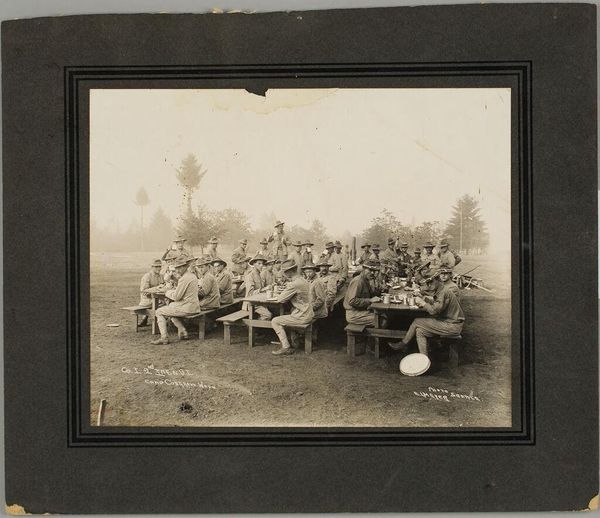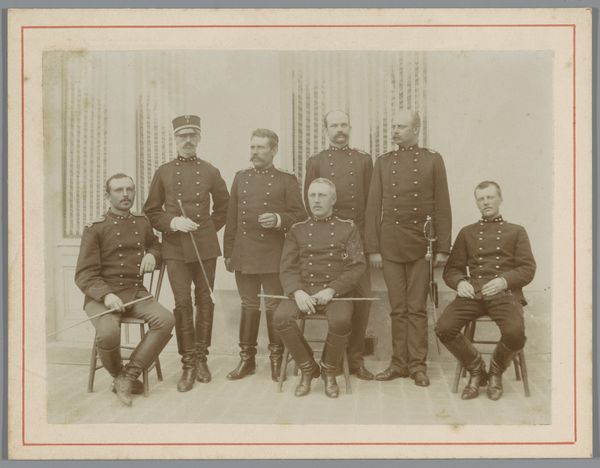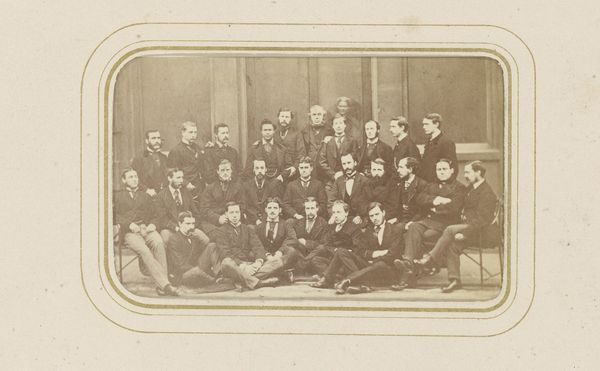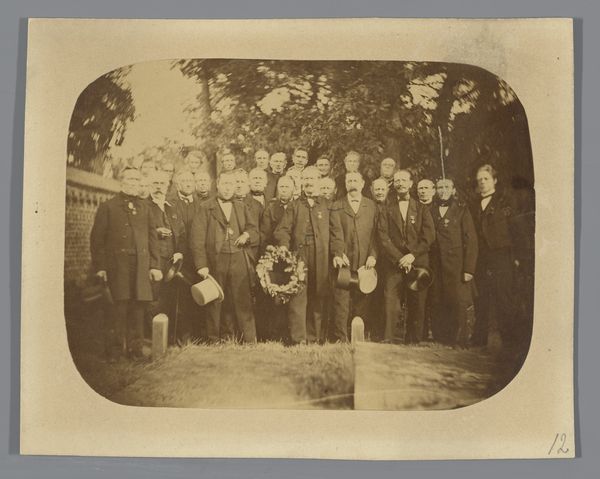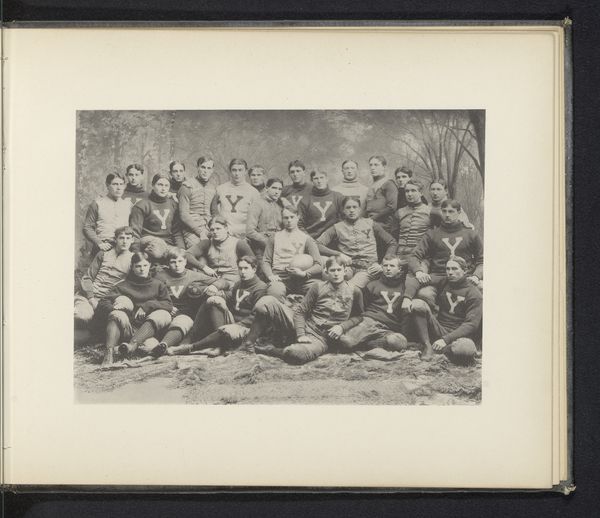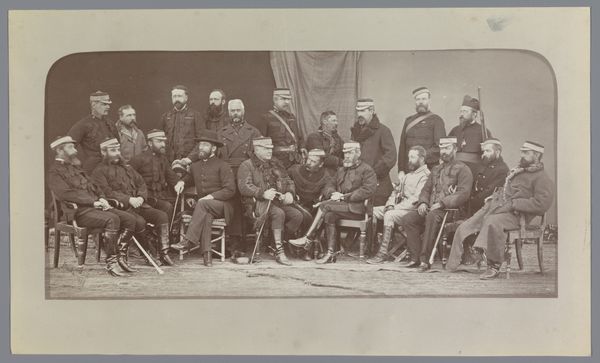
Groepsportret officieren en onderofficieren van het KNIL in Atjeh, vermoedelijk 1897 1897 - 1899
0:00
0:00
print, photography, gelatin-silver-print
#
portrait
#
print photography
# print
#
photography
#
historical photography
#
group-portraits
#
orientalism
#
gelatin-silver-print
#
19th century
Dimensions: height 200 mm, width 250 mm
Copyright: Rijks Museum: Open Domain
Curator: This is a fascinating gelatin-silver print from between 1897 and 1899, entitled "Groepsportret officieren en onderofficieren van het KNIL in Atjeh, vermoedelijk 1897." It's a group portrait by Christiaan Benjamin Nieuwenhuis, held here at the Rijksmuseum. Editor: There's an undeniable sense of stern composure here. The tight formation of figures, combined with the monochrome palette, speaks volumes even before we consider its subject matter. Curator: Indeed. The composition adheres to a formal structure: two rows of officers and non-commissioned officers are arranged symmetrically. Notice the repetition of the dark uniforms, punctuated by the occasional lighter trousers. The lines formed by their bodies, the creases in their uniforms create strong visual rhythms. Editor: Those uniforms also speak of colonial power, a rigid system enforced across an ocean. The subjects are officers in the Royal Netherlands East Indies Army, specifically stationed in Aceh during the conflict. Their placement signifies hierarchy. The officers in front, seated, more senior than those standing behind. Curator: The light, as well, plays a significant role. Nieuwenhuis carefully manages the contrast to accentuate the contours of their faces and uniforms. It creates a subtle interplay of light and shadow across the entire surface. Notice, for instance, how the light falls unevenly on their caps, giving a variance that suggests an attention to detail. Editor: But it's an idealized view, isn't it? The war in Aceh was brutal, characterized by guerilla warfare and immense suffering of the local population. This photo conveniently leaves that out, portraying an image of order, discipline, and perhaps even... pride? It is a photograph that performs as an element of statecraft. Curator: Your point is well-taken, of course, regarding the socio-political implications. Yet I think a close examination still speaks to how Nieuwenhuis manipulated the technical apparatus of the gelatin-silver print to achieve this level of detail and create a visually unified representation. He captures each figure as an individual, and part of the collective, so a detailed formalism serves the goals of creating this visual propaganda. Editor: Well, analyzing this photograph has highlighted how art objects function as complex historical documents and sites for dissecting power dynamics. Curator: Absolutely, I now appreciate a deeper engagement with the historical context, even as I recognize the undeniable formalism of the composition.
Comments
No comments
Be the first to comment and join the conversation on the ultimate creative platform.
